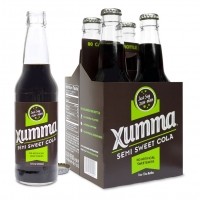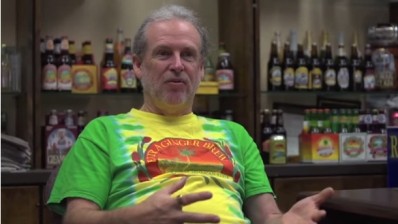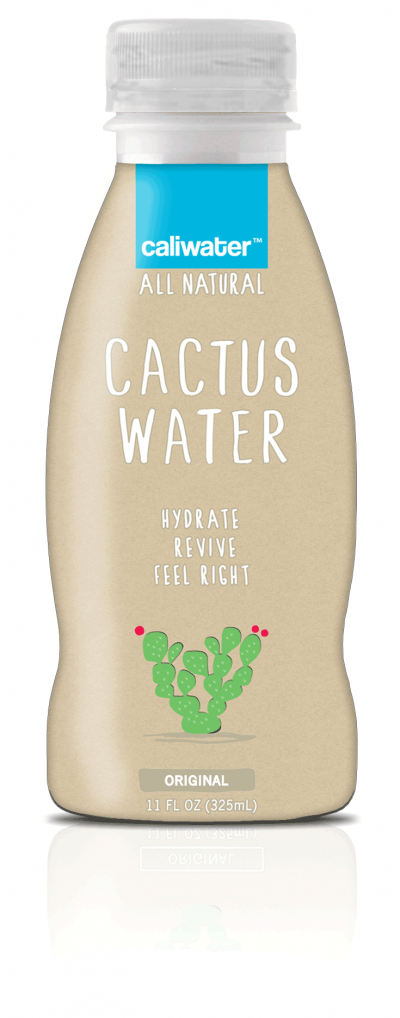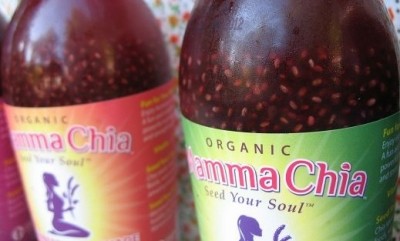Special edition: Healthy beverage trends
Xumma cofounder: Soda isn’t dying; traditional versions are just too sweet

“I just don’t agree that the soda category overall is dying,” Bradford Harris, cofounder and chief operating officer of San Francisco-based Xumma Cola, told FoodNavigator-USA. “The average American still drinks more soda than coffee. There’s still huge demand for it—it’s a massive industry. People are just fed up with how poorly formulated most traditional sodas are.”
Harris cofounded Xumma Cola with his dad Cole (a longtime beverage industry consultant) and his mom Daphne after they discovered a void in the beverage market for a less sweet cola that showcases—first and foremost—the flavor of cola.
Start with the ubiquitous appeal of cola
Xumma contains half the sugar of a regular Coke, 46 mg of caffeine sourced naturally from coffee and 80 calories per 12-ounce bottle (compared to as much as 150 in a regular cola).
“The first thing we realized and the conviction that underlies the company is that cola has an incredibly appealing flavor—like vanilla, strawberry or chocolate—that people seem to really love,” Harris said. “I love soda, but I’ve always felt it was exceptionally sweet. Consumers are moving away from excessively sweet, especially ‘sugar added’ sweet. So what we’ve tried to do is create a smarter way to indulge with a semisweet cola.”
All told, the formulation process took about a year. Harris enlisted the help of Stanford University students (where he is currently working on a PhD on the history of synthetic materials engineering) to test the product, while Xumma’s flavor scientists tinkered with everything from sweetener type to carbonation levels and finding the right balance of citrus, vanilla and warm spice notes in the cola itself. Although the Harris' were open to sweetener alternatives (including zero calorie options), they settled on their “initial instinct” of using cane sugar, which pairs best with a drier cola like Xumma, Harris said.
With some seed money from family, friends and a few angel investors, and "a lot of bootstrapping", Xumma officially launched in the summer of 2013 at Coupa Café, a Stanford University café that now has five locations throughout California. “I’m from the Stanford community and the café is Stanford community-focused, so it’s been easy to engage the ownership and the people who come there,” Harris noted.
The brand has been slowly scaling up, expanding distribution in the fall to include a few corporate campuses.
“The first production run we ever did was only enough to fit in a standard, full freight 18 wheeler. We still bottled to order at that point,” Harris said with a laugh. “But we really gained momentum with corporate campuses in the summer and fall. We haven't gone into any retail locations yet because the paperwork and process of supplying a large grocery store felt a little beyond what we were willing to do.”
But that all changed when the Xumma team went to the Fancy Food show in San Francisco in January, where the brand was called out as one of the top five hot trends (low-sugar sips) and got some much-needed validation from its F&B peers.
Natural enough for Whole Foods, widely appealing enough for mass retailers
“We realized that we introduced this to the world of food and beverage and people liked it. Now we were ready to start partnering with retailers. We’re natural enough that we’ll fit in well at Whole Foods or Trader Joe’s, but we’re also widely appealing enough for any grocery store or anywhere people want to grab a soda.”
The firm hopes its soda brand with the funny name (chosen because it sounds like how people from the Harris’ home state of Maine say “summer”) will become the cola category equivalent of what Xerox is to photocopying or Kleenex is to tissues. “I want it to be a fundamental association that people have with the category,” Harris said.
Still, he admits that breaking into the massive, complex soft drink market that’s dominated by a handful of the world’s biggest companies in a time where many are calling the category tired isn’t easy, particularly since the company doesn’t plan to become profitable through line extensions.
“There is this assumption you have to have all these flavors to be successful,” Harris noted. “We disagree. That being said, how do we grow the business? It’s a perennial balance of consumer awareness with distribution and supply. We’re trying to interrupt the intrinsic urge to reach for the cola you’ve had forever. We want you to know that’s not the only choice you have. We will do that through word of mouth, social media, point-of-sale displays, etc. We don’t have any delusions about that it’s going to be hard work. But that’s also why we’re solely focusing on the Bay Area right now.”
Craft beer movement solidifies power of small, disruptive brands
In addition to appealing to Bay Area consumers’ more "balanced" approach to health—"they enjoy the sunshine and don’t worry as much about being in the sun," as Harris puts it—he also hopes Xumma's Bay Area roots continue to resonate with local consumers enough to propel it into new markets.
“Across the beverage industry right now, the big topic of discussion is craft beer,” Harris said. “When you look at overall market share, craft beer still small compared to the Anheuser Buschs and MillerCoors, but it is growing so fast that everyone is taking it very seriously. The same dynamic holds for other food and beverage categories too, and cola is no exception to that rule. It’s fun to experience a product that’s been incubated in your own backyard. It has distinct vibe of your community. That means something to people. And that's why craft beer continues to impact the category."
















